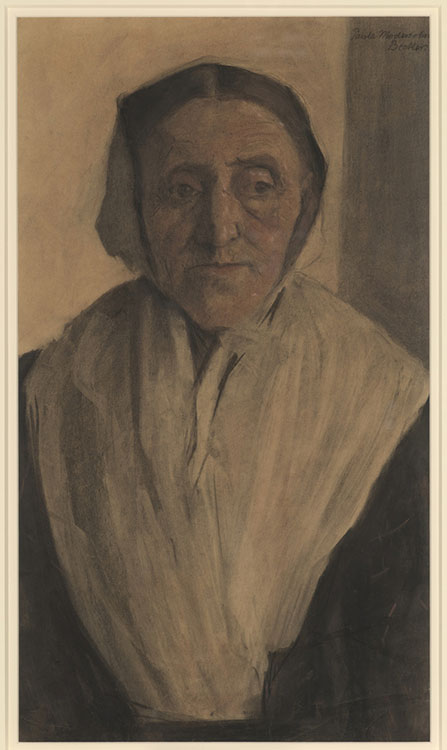
Modersohn-Becker studied art in Bremen and London before attending the School for Women Painters in Berlin. In 1898, she moved to the artists' colony of Worpswede, near Bremen. Its artists painted in a realist style, seeking out subjects in the rural countryside. This sheet belongs to a series of about fifty large drawings of peasant women that Modersohn-Becker created at the time. She drew the same model, a resident of the poorhouse in Worpswede, in a second portrait in which the women is shown with her rugged hands crossed across her lap. Here, Modersohn-Becker cropped the figure closer and set off her head against a lighter background. By simplifying the composition and emphasizing the sitter's large white shawl, she gave the portrait a greater sense of monumentality. Modersohn-Becker's art would change radically in subsequent years, following repeated trips to Paris. Her career was cut short when she died in childbirth in 1907.
Inscribed at upper right (by Otto Modersohn after the artist's death), "Paula Modersohn-Becker".
